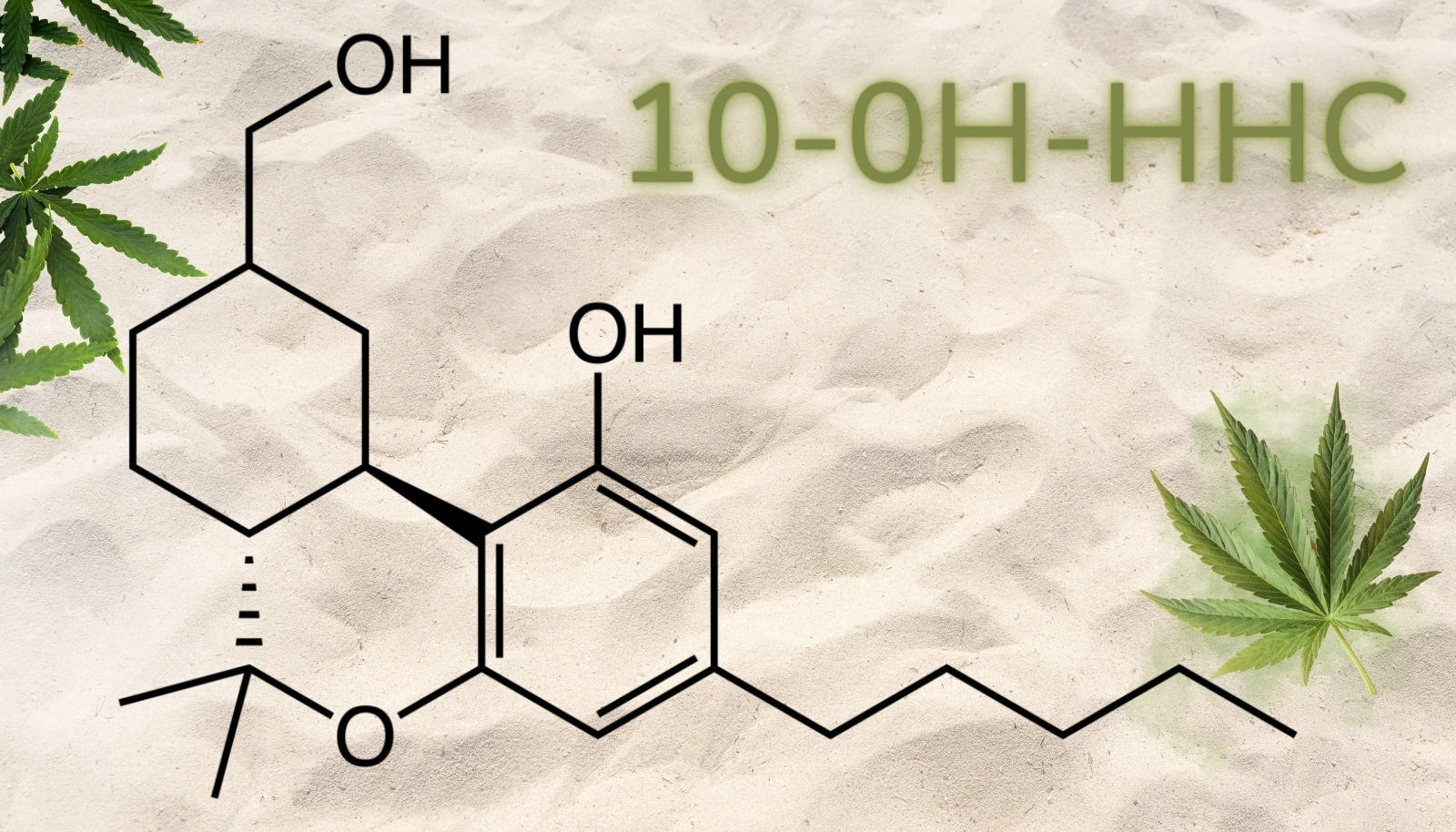What is 10-OH-HHC and what are its effects?
(10-hydroxyhexahydrocannabinol) is a newly discovered cannabinoid that’s garnering significant interest within the scientific community. Although closely related to tetrahydrocannabinol (THC), this compound originates from the cannabis plant and undergoes a series of chemical transformations to reach its final form. While it holds promise for potential therapeutic applications, it remains largely unexplored, necessitating deeper research into its benefits and risks. The journey of cannabinoids began in earnest during the 20th century, with THC and cannabidiol (CBD) being among the first to capture scientific attention. The advent of 10-OH-HHC represents a more recent milestone in cannabinoid science. Researchers have been keenly exploring THC derivatives, hoping to uncover novel compounds that might deliver the therapeutic advantages of CBD or THC, but with potentially distinct effects. 10-OH-HHC is created through a sophisticated chemical process involving hydrogenation and hydroxylation. Initially, THC is transformed into hexahydrocannabinol (HHC). Further modifications introduce a hydroxyl group at the 10th carbon position, forming 10-OH-HHC. This synthetic pathway offers scientists a means to study this compound in detail, shedding light on its possible applications and implications in both therapeutic and industrial contexts. While structurally akin to THC, 10-OH-HHC features a hydroxyl group at the 10th carbon, setting it apart from its predecessors. This subtle alteration profoundly impacts how the compound interacts with the body’s endocannabinoid system (ECS), potentially yielding unique outcomes compared to THC or HHC. Many users report a subjective experience with 10-OH-HHC that mirrors that of HHC, suggesting its utility as a viable alternative. Similar to other cannabinoids, 10-OH-HHC engages with the ECS, which regulates numerous physiological processes. This system comprises CB1 and CB2 receptors, along with enzymes responsible for synthesizing and breaking down endogenous cannabinoids. 10-OH-HHC likely binds to these receptors, especially those in the brain and central nervous system (CB1) and the immune system (CB2). Given its distinct molecular structure, it might influence these interactions uniquely, resulting in novel physiological and psychological effects. The above points are merely speculative and do not constitute medical advice. Always consult a healthcare provider before trying any new cannabinoid. Legal Considerations The legal framework surrounding 10-OH-HHC differs across nations. Some jurisdictions rigorously regulate or prohibit all cannabis-based substances, while others address synthetic variants cautiously. Since this compound is relatively new, its legal status continues to evolve, prompting users to remain informed about regional laws governing its possession and usage. Several nations have yet to encounter 10-OH-HHC, leaving them without established regulations. Before acquiring this synthetic cannabinoid, ensure compliance with local laws. Today, 10-OH-HHC is available in diverse formats, including dried flower, pre-rolls, cartridges, edibles, and oils. Numerous businesses offer these products, catering to varied consumer preferences. Current research on 10-OH-HHC remains nascent. Future efforts will focus on mapping its entire pharmacological profile, encompassing safety, effectiveness, and therapeutic prospects. Rigorous clinical trials will be essential to substantiate its efficacy and establish standardized dosages. Scientists are also probing the synthesis of additional hydroxylated cannabinoids to contrast their characteristics and advantages. As research advances, 10-OH-HHC could emerge as a vital component of the medical cannabinoid arsenal. Investigators should also evaluate analogous compounds like 11-OH-THC or CBDV. 10-OH-HHC represents an exciting frontier in cannabinoid exploration, holding the potential to address pain, inflammation, neuroprotection, and mental health concerns. Nevertheless, prudence is critical given the present scarcity of comprehensive clinical evidence and the inherent risks. Efforts must also prevent unauthorized access by younger populations. Those intrigued by this novel cannabinoid should keep abreast of ongoing studies and legal developments. Esophagus and Bronchoscopy Instruments We're professional Esophagus and Bronchoscopy Instruments
manufacturers and suppliers in China, specialized in providing high
quality medical instruments with reasonable price. We warmly welcome you
to buy or wholesale bulk Esophagus and Bronchoscopy Instruments for sale here and get quotation from our factory. Bronchoscopy Instruments,Esophagoscopy Instruments,Bronchoscopy Biopsy Forceps,Esophagus And Bronchoscopy Instruments Tonglu WANHE Medical Instrument Co., Ltd , https://www.vanhurhealth.com10-OH-HHC: An Emerging Compound with Potential Therapeutic Value

A Brief History of 10-OH-HHC
From THC to 10-OH-HHC: The Manufacturing Process
Unveiling the Chemistry of 10-OH-HHC
Interactions Within the Human Body
Therapeutic Possibilities
Risks and Side Effects
Countries Where 10-OH-HHC is Permitted
Looking Ahead: Exploring New Cannabis Derivatives